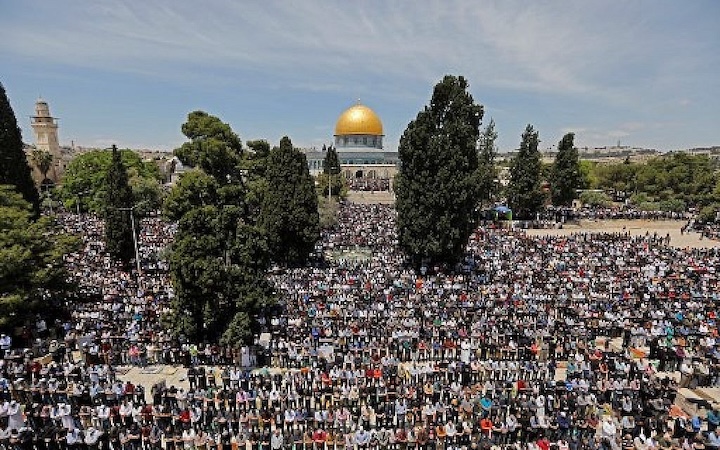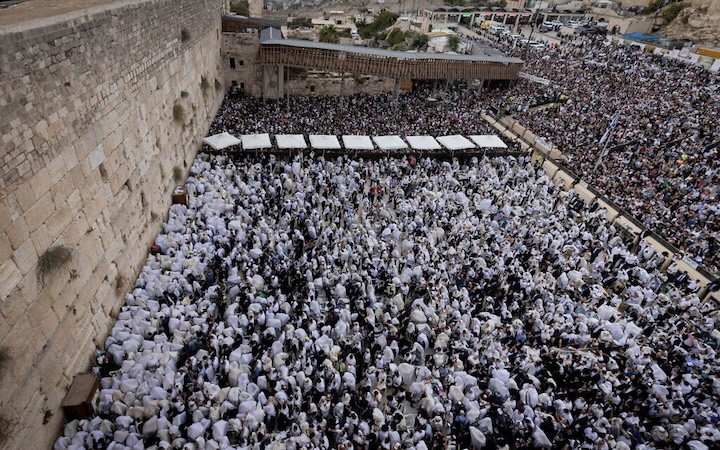In the wake of the Hamas terrorists’ massacre of over 1200 Israeli citizens, the Israeli Defense Force (IDF) has invaded the Gaza Strip. Their mission is to destroy Hamas, an organization whose explicit goal is the destruction of the Jewish state. Since the Holy Land is involved, these developments are also of vital interest to Catholics, who should know something about the context and history of the Arab/Israeli conflict, which is much older than the state of Israel itself.
Palestinian apologists consistently attribute the conflict to the foundation of the Jewish state by the United Nations in 1947, an event known to the Palestinians as the Nakba – the “catastrophe.” Their claim is that with the foundation of Israel, Palestinians lost their lands and that those lands should be restored to their pre-1947 owners.
This is a bit of a red herring, however, because numerous property transfers have taken place in the meantime. In some cases, the “original” owners may be clear. Others might be hard to locate; the generation that fled Israel has mostly died.
Modernization began in Palestine prior to World War II, and many Arab fellahin (peasant cultivators) had already left the countryside for quite squalid conditions in the cities, especially Haifa. Numerous Arabs departed Israel after the foundation of the Jewish state. They left because they refused to live in a state that had Jewish governance, which they believed by Islamic law was impermissible.
From the days of the late Roman Empire until the nineteenth century, the Jewish presence in Palestine was thin. The Jews had been expelled after the Romans crushed their revolt and destroyed Jerusalem in 70 AD. But for decades the ban on Jews in the region was often ignored and unenforced, and Jews returned to their ancestral homeland.
The Jewish presence in Palestine took a more devastating hit with the so-called Bar Kochba revolt (132-5 A.D.) against Roman authority. Jews were once again forbidden to reside in Judaea, and this time Emperor Hadrian determined to erase the Jewish heritage of Judaea and Jerusalem. He essentially declared Jerusalem a pagan city and changed its name to Aelia Capitolina – a city dedicated to Jupiter.

Hadrian built numerous pagan temples in the city (one over the site of Calvary). Roman repression dominated the next two centuries, and many Jews left Judaea, in particular for Babylon and Arabia (the city of Medina, to which Muhammad fled from Mecca, had a large Jewish population).
Many Jews continued to reside in Galilee, which became a Jewish cultural center during the medieval and early modern centuries. Throughout the Middle Ages, however, Judaea was a population thinly populated. Natural disasters and poverty prompted many people to seek prosperity and security elsewhere. Desperately poor fellahin, the vast majority of the population, lived in mostly empty rural districts. Christian and Jewish minorities tended to reside in towns.
Throughout the medieval and early modern centuries, some Jewish voices called for a return to Israel. None had a permanent impact before Theodor Herzl (1860-1904), a subject of the Austro-Hungarian Empire. Herzl believed that Jewish assimilation in Christian Europe was a fantasy, and that Jews, like other ethnicities, needed a homeland of their own.
Many Gentiles agreed with him, and so from the 1880s, the restoration of a Jewish state in Judaea gained momentum. Jewish emigration back to Israel grew. Still, Jews remained a minority concentrated in Galilee and Jerusalem, where they became the majority by 1896.
Jewish migration to Judaea alarmed the Arabs. Arabs likewise resented British efforts to aid Jewish emigration. In 1917, while a military campaign drove the Ottomans out of Judaea and Syria, the British parliament adopted the Balfour Declaration, which made the restoration of a Jewish homeland the official policy of the United Kingdom.

In 1920, they attacked Jews in Jerusalem in what became known as the Nebi Musa riots (named for the festival at that time of year). Their frustrations again erupted in the 1936-1939 Arab revolt against the Mandatory regime. With Jewish support, the British defeated the Arabs.
The Arabs subsequently served as Nazi allies during World War II, for both the Arabs and the Muslims sought the destruction of the Jewish people in both Europe and Palestine, which could only happen with a German victory.
After the war, the British became more favorable to Arab protests against Jewish emigration to Israel and did their best to prevent Jews from settling there. But Jews all over the world helped emigrants avoid the British “embargo.”
The Haganah, an underground Jewish organization founded in 1920, aided the entrance of Jews into Israel. By 1947, the British had largely conceded control of Israel to Haganah, which contributed in no small measure to the creation of the state of Israel, and its recognition by the United Nations, and most other governments in Western Europe and North America.
The first Arab-Israeli War broke out soon thereafter.
Clearly, the hatred that Arabs bear for Jews is much older than the establishment of the state of Israel. That hatred was not initially a reaction to the expropriation of lands but of the very presence of what Arabs deemed to be too many Jews in Palestine. And that the government of the country is avowedly Jewish – a humiliation in the eyes of many Muslims, whose religion enjoins toleration only of those groups who bow to Islamic authority.
Muslim tradition also holds that whatever region becomes Muslim must remain Muslim. So Israel is illegitimate on that basis as well. Further, any event that is a “catastrophe” must obviously be reversed.
The events of the last few weeks have roots that extend far into the past.
__________















